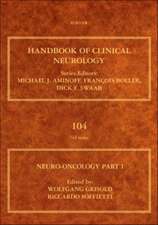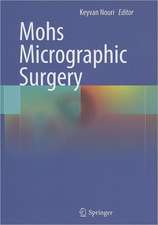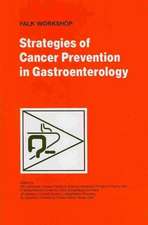Intracellular Delivery II: Fundamentals and Applications: Fundamental Biomedical Technologies, cartea 7
Editat de Aleš Prokop, Yasuhiko Iwasaki, Atsushi Haradaen Limba Engleză Hardback – 4 iun 2014
| Toate formatele și edițiile | Preț | Express |
|---|---|---|
| Paperback (1) | 1105.40 lei 6-8 săpt. | |
| SPRINGER NETHERLANDS – 30 apr 2017 | 1105.40 lei 6-8 săpt. | |
| Hardback (1) | 1108.51 lei 6-8 săpt. | |
| SPRINGER NETHERLANDS – 4 iun 2014 | 1108.51 lei 6-8 săpt. |
Preț: 1108.51 lei
Preț vechi: 1166.84 lei
-5% Nou
Puncte Express: 1663
Preț estimativ în valută:
212.14€ • 230.35$ • 178.20£
212.14€ • 230.35$ • 178.20£
Carte tipărită la comandă
Livrare economică 23 aprilie-07 mai
Preluare comenzi: 021 569.72.76
Specificații
ISBN-13: 9789401788953
ISBN-10: 9401788952
Pagini: 479
Ilustrații: XIX, 479 p. 168 illus., 110 illus. in color.
Dimensiuni: 155 x 235 x 32 mm
Greutate: 0.77 kg
Ediția:2014
Editura: SPRINGER NETHERLANDS
Colecția Springer
Seria Fundamental Biomedical Technologies
Locul publicării:Dordrecht, Netherlands
ISBN-10: 9401788952
Pagini: 479
Ilustrații: XIX, 479 p. 168 illus., 110 illus. in color.
Dimensiuni: 155 x 235 x 32 mm
Greutate: 0.77 kg
Ediția:2014
Editura: SPRINGER NETHERLANDS
Colecția Springer
Seria Fundamental Biomedical Technologies
Locul publicării:Dordrecht, Netherlands
Public țintă
ResearchCuprins
Editorial and Introduction to Volume 2.- Part I Novel nanocarrier design and processing.- Proprietary nanofiber technologies and scale-up.- Magnetically responsive (nano)biocomposites.-Zwitterionic nanocarriers for gene delivery.- Stimuli-responsive polymeric nanocarriers as promising drug and gene delivery systems.- Photo-responsive polymeric nanocarriers for on-demand drug delivery.- Part II Nanocarrier characterization and function.- Considerations on uptake and intracellular trafficking of nanocarriers.- Mucus as physiological barrier to intracellular delivery.- Investigation of nanoparticles in biological objects by electron microscopy techniques.- Gold nanoparticles for high resolution imaging in modern immunocytochemistry.- Design of functional polymers for intracellular drug nucleic acids delivery.- Membrane-domain-selective drug targeting based on lipid modification.- Multifuntional protein-based nanoparticles for theragnosis.- Cytocompatible phospholipid polymer for noninvasive nanodevice.- Intracellular protein delivery using self-assembled amphiphilic polysaccharide nanogels.- Part III Simulation for delivery and function.- Molecular dynamics simulations of polyplexes and lipoplexes.- Computational studies of highly pegylated sterically stabilized micelles self-assembly and drug solubilization.- Toward intracellular delivery and drug discovery,Stochastic logic networks as efficient computational models for gene regulatory networks.- Part IV Nanocarriers for drug discovery and treatment.- Nanodiamonds as intracellular probes for imaging in biology and medicine.- Intracellular delivery of RNA using RNA-binding proteins or peptides.- Hyaluronic acid based nanofibers for wound dressing and drug delivery carriers.- Potential of siRNA therapy in chronic myeloid leukemia.
Textul de pe ultima copertă
This volume is a continuation of Volume 1 following the previously published Editorial. More emphasis is given to novel nanocarrier designs, their characterization and function, and applications for drug discovery and treatment. A number of chapters will deal with nanofibers as a new major application within the biomedical field with a very high success rate particularly in wound healing and diabetic foot and spine injuries. A major new subdivision will deal with mathematical methods for the assembly of nanocarriers both for simulation and function.
Caracteristici
Some chapters will serve as tutorials as they will feature step-by-step nanocarrier preparation and function A new section on nanocarrier assembly via computing will provide a vehicle for future direction, that is towards their rational design Applications in the wound healing is particularly emphasized Includes supplementary material: sn.pub/extras



















